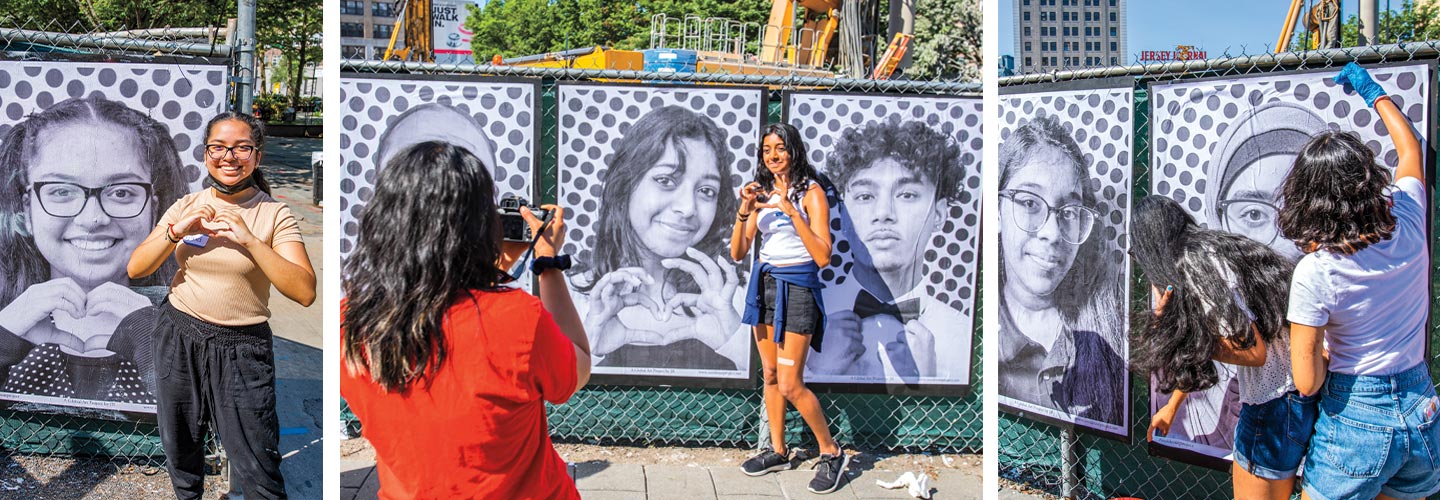Taxis honked and delivery bikes whizzed past on a humid June morning. As commuters trudged to a New Jersey train station, their attention turned from the heat. They were curious about the students hanging portraits on a fence bordering a bleak construction site.
The students, who attend Jersey City Arts, a program for creative high school students in Jersey City, New Jersey, were completing the final phase of a months-long project. Their goal? To raise awareness about the importance of mental health through a public artwork.
“Public art can contribute to empathy and sympathy. All these pictures, all these [people] are facing the same problems as you, and we’re all here together,” says a student named Shrushti.
On a humid June morning, something catches people’s attention outside a train station. Students were hanging large portraits on a construction site fence. They were students from Jersey City Arts, a program for creative high school students in New Jersey. They were finishing a public art project. Their goal was to raise awareness about mental health.
“All these pictures, all these [people] are facing the same problems as you, and we’re all here together,” says Shrushti, a student.

